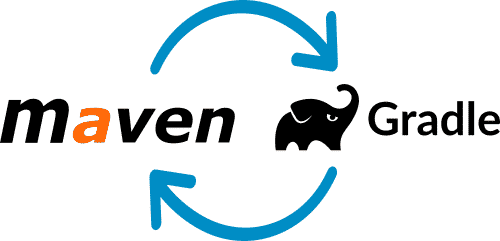Gradle is an open- source build automation tool which is based on Apache Maven and Apache Ant’s concepts. The first point of difference between Gradle and Maven is that Gradle uses domain-specific language which is relatable to Groovy programming language. On the other hand, Apache Maven uses XML for configuration works. The following is the list of difference between Gradle and Maven both of which are extremely popular in build automation tool category.
Comparison Between Gradle Maven
The Basics –
Gradle uses a directed acyclic graph for determining the order of tasks to be run. Gradle hit the make in 2007 and in 2013, it was adopted by Google as a build system for their Android projects. Gradle is known for its support for multiple projects builds and you can incrementally add on to your build without an issue. Incremental adding is a reality and therefore, it is an obvious choice. Gradle supports development and deployment with Java, Groovy, and Scala and there will be more inclusions in the future as it is quite evident thanks to its popularity.
Coming to Maven, it is a tailor-made project build automation tool for Java. You can map out the build of any particular software and its dependencies easily. As stated earlier, it uses XML to describe the building project, the dependencies like third-party modules, the order of the build and the plugins required. The basic working on Maven is to download the libraries and plugins from repositories and place them in a cache on the local machine. Though Maven is more for Java projects, it is compatible with Scala, Ruby, and C# among the leading programming languages. Besides, it supports a lot of other programming languages which is why it is slightly ahead of Gradle is usage.
Performance –
The first parameter in today’s world for any comparison is the performance. The performance of a build tool is determined by its build time. Both Gradle and Maven are capable of handling parallel project building, and both have dependency resolution system in place. However, in terms of performance, Gradle is a clear winner, and the credit for the same goes to its incrementality and work avoidance mechanism.
Gradle has a smart mechanism due to which it avoids works and which one to avoid is determined by taking the inputs and outputs of different tasks. Therefore, it only runs only what is required and processing those files that are related. On top of that, it reuses the outputs that have the same inputs which increases its performance, and it is more like a cache mechanism. Moreover, there is Gradle Daemon that keeps build info consistently in memory. In short, Gradle is twice as fast as Maven in all scenarios.
Customization –
Gradle is the official build tool for Android as chosen by Google. The reason for the choice is due to the model Gradle follows which makes it extensible. Moreover, it allows native development with C and C++, and this is expanding its ecosystem to a greater extent.
On the other hand, Maven has a rigid model due to which customization is tedious, and many consider it to be impossible. But this makes any Maven build easier to understand due to limited parameters and requirements. However, it is this advantage that makes it unsuitable for various automation problems. Gradle for that matter is more customized and designed for empowering users.
Dependency Management –
Both the tools have the capability to resolve dependencies, and there are cache dependencies locally and in parallel. Maven also allows overriding dependencies while Gradle offers customizable dependency selection. The developer can also declare the substitution rules as per the project. This is what enables Gradle to build multiple projects leading to composite builds. Besides, Gradle also lets the producers declare implementation and API dependencies. This prevents unwanted leakage of libraries.
Reason For Choice –
The reasons why a developer is likely to choose Gradle over Maven are its flexibility, ease of use, fast and incremental builds. On the other hand, the reasons for choosing Maven are dependency management, modularization, consistency, lots of plugins, and conventions over configuration. The companies using Gradle are Netflix, Lyft, 9GAG to name a few. Maven is used by Zillow, Yammer, Case, BlueConic and likewise.
Apart from these, the user experience is great in both. However, Maven is slightly better as it supports various IDEs which makes it popular among various categories of developers. Moreover, the IDEs for Gradle are improving quickly, and the Gradle team is in collaboration with the IDE makers for making them much better. Going by the statistics, Gradle has more users than Maven due to its performance and features. Along with Gradle and Maven, Ant is an alternative. But Gradle has hit the sweet spot between Ant and Maven. With the progressive improvements in Gradle, it is likely to lead in the space.

